Application: Creating a Resume
In addition to the cover letter, the resume is the second important core element of your application documents. Some hiring managers even look at this first. Therefore, you should also strive for the best possible structure, clarity, and a high-quality presentation here. This is what you should know about the structure of the resume...
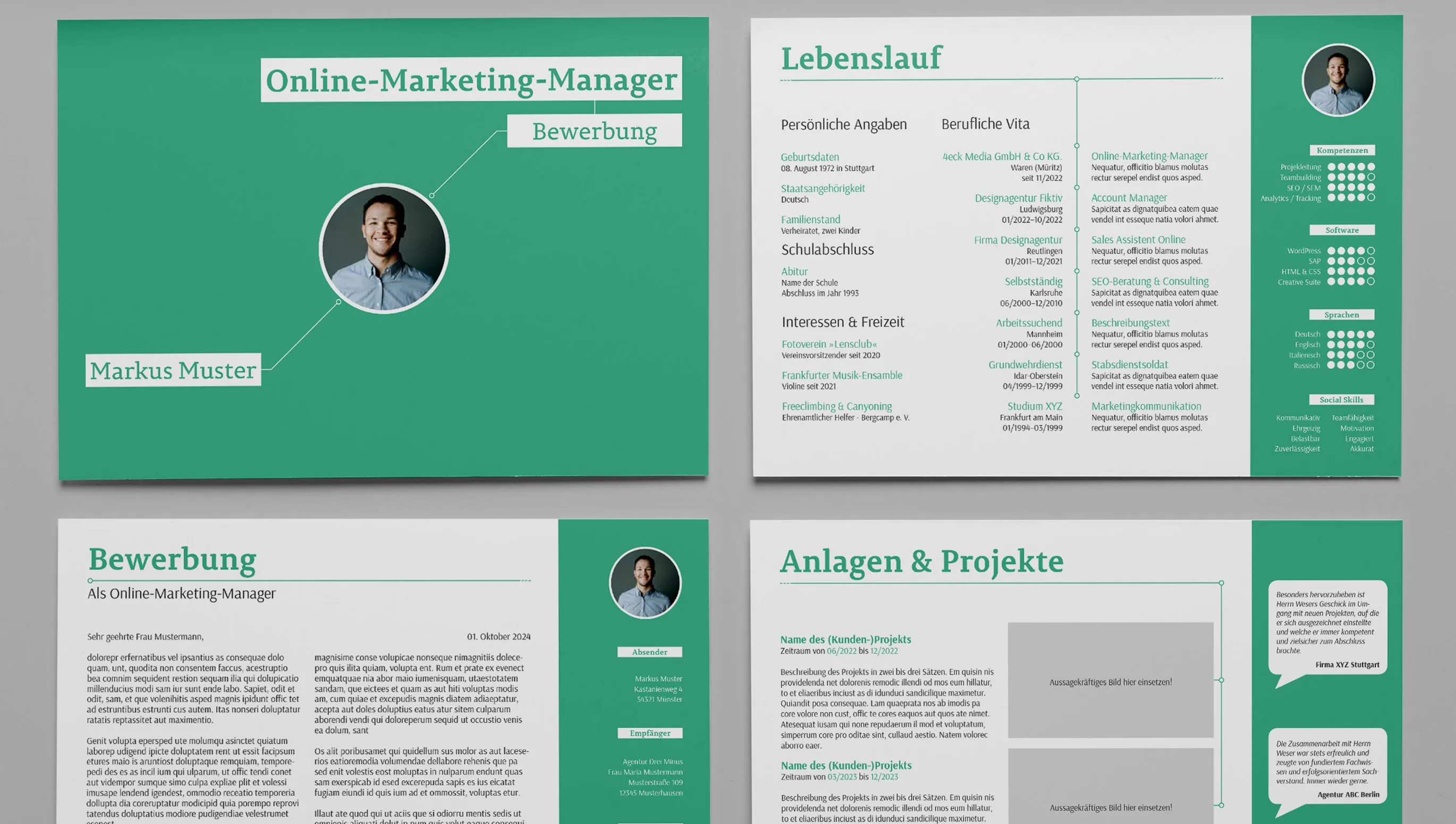
Seamless and relevant
The resume should typically be one or two pages, with a maximum of three pages for extensive work experience. It reflects your professional career, education, skills, interests, and hobbies. In other words, properly formatted, it ideally tells a convincing story about you!
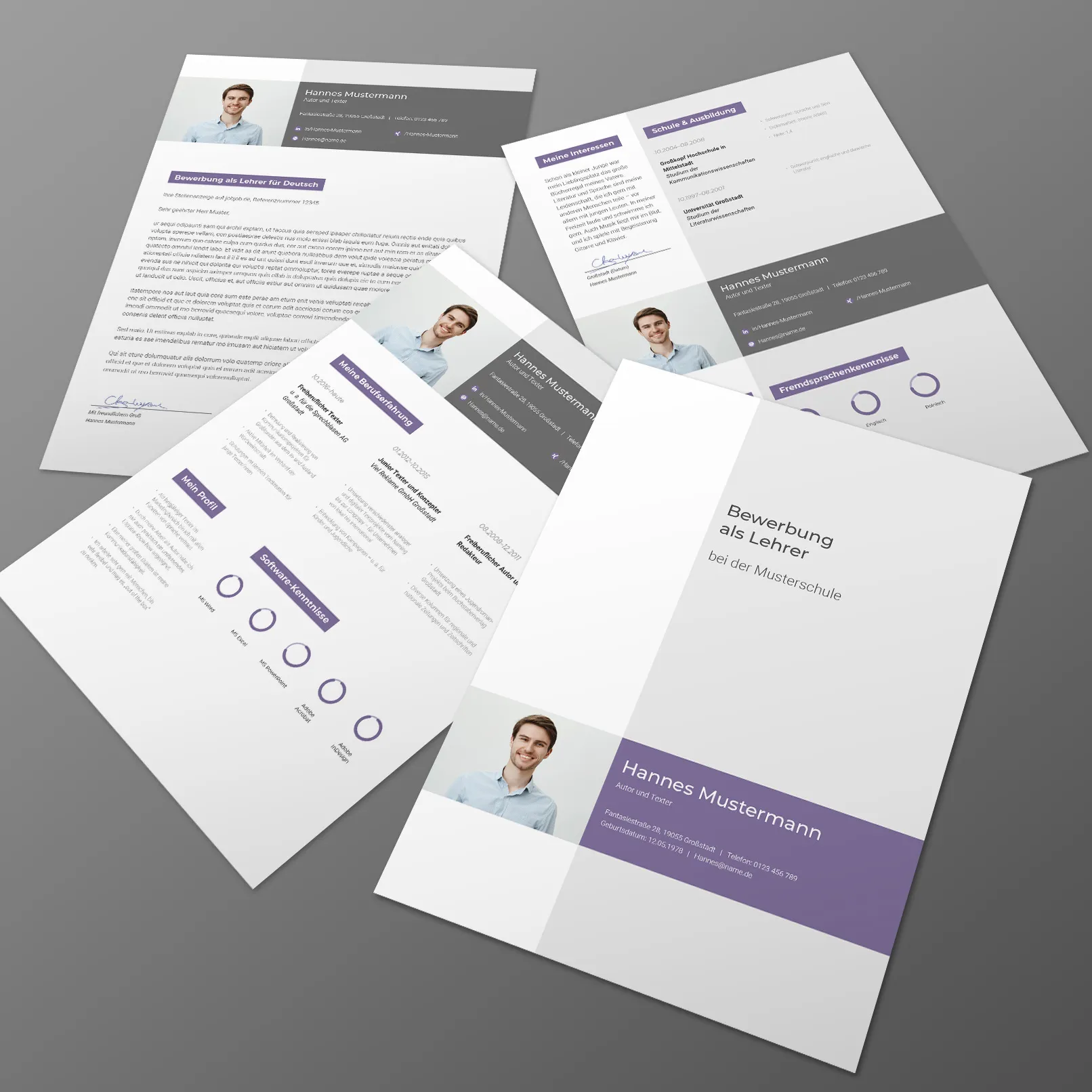
Continue the design of the cover letter and the letter in the resume seamlessly. Use the same color scheme, pick up design elements already used, and stick to the same fonts and font styles. Your application documents should be consistent in layout. A common mistake is when someone has used a modern resume template, but the cover letter looks like a plain Word document.
Personal details in the resume
The fact that the page is the resume should be clearly recognizable due to its presentation and positioning in your documents. Therefore, you can title it "Resume", but you are not strictly required to do so.
Your (again) name, address, (mobile) telephone number, and email address should be mentioned. Details such as your religion or party affiliation are only recommended if they are actually relevant to the position. Information such as birthplace, date of birth, nationality, marital status, children, and their ages are voluntary. So, you decide for yourself how much you want to disclose.
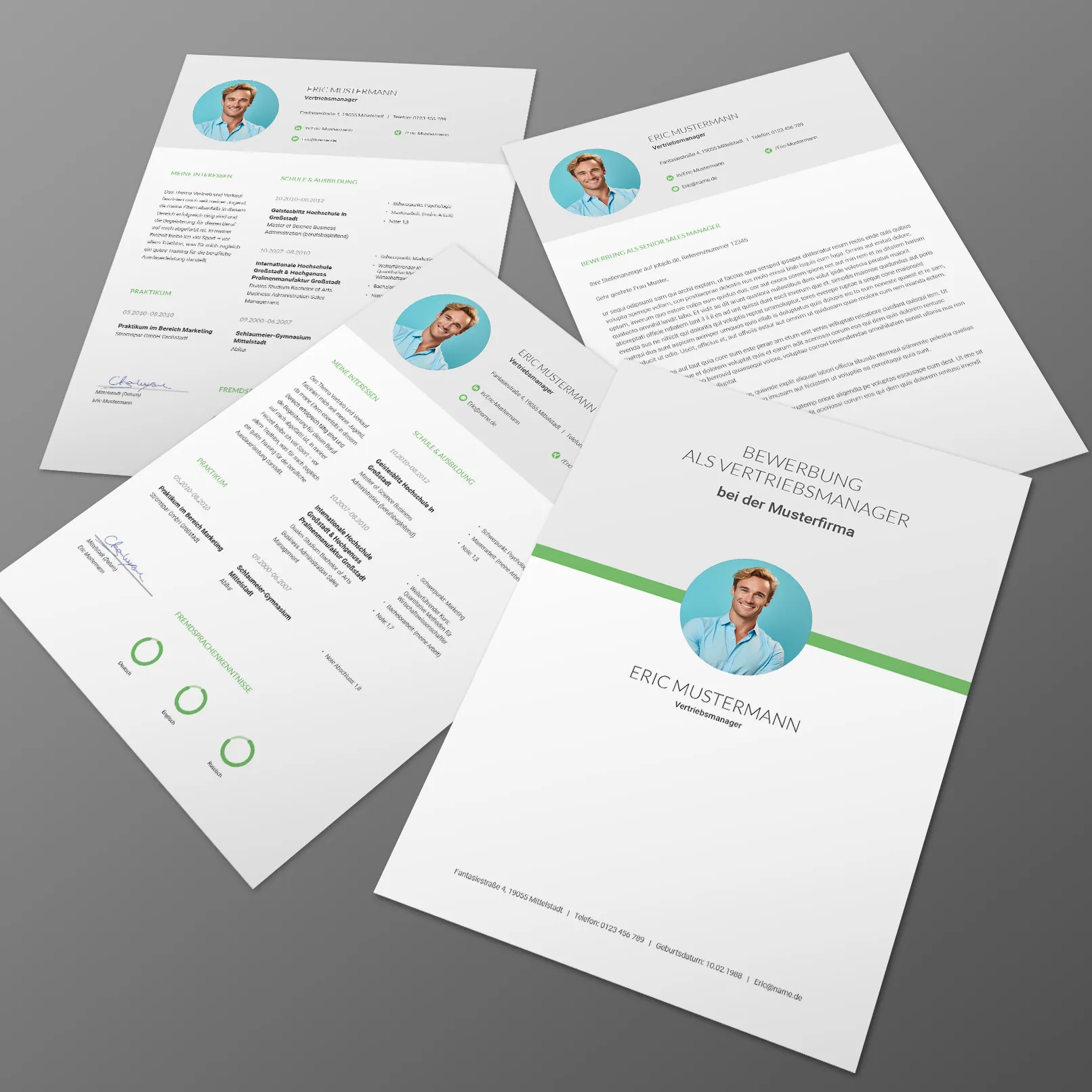
The same applies to your application photo. Although still common practice, you are not obliged to include a application photo in your application documents. At the latest, the resume is the right place for it - but if the application photo is already on a possibly inserted cover letter, you do not need to include it again here.
All in all, your personal details in the resume in a comprehensive version could include the following data:
- Name: Henriette Samplewoman
- Address: Sample Street 1 a, 12345 Patternville
- Phone: 01234 4455666
- Mobile: 0123 445566
- Email: henriette@samplewoman.de
- Date of Birth: 1.10.1990
- Nationality: German
- Place of Birth: Patternville
- Marital Status: Married, 1 Child (13 years old)
Professional Experience, Education, and Internships
It is common to present your data in a tabular format in an American, that is, reverse chronological form. So you start with the most recent at the top and end with the oldest information at the bottom.
The placement of the dates and corresponding stations depends on your chosen layout. A common variation is to place the dates in the left column and the stations in the right column of the table. Similarly, positioning the dates above the stations is also possible.
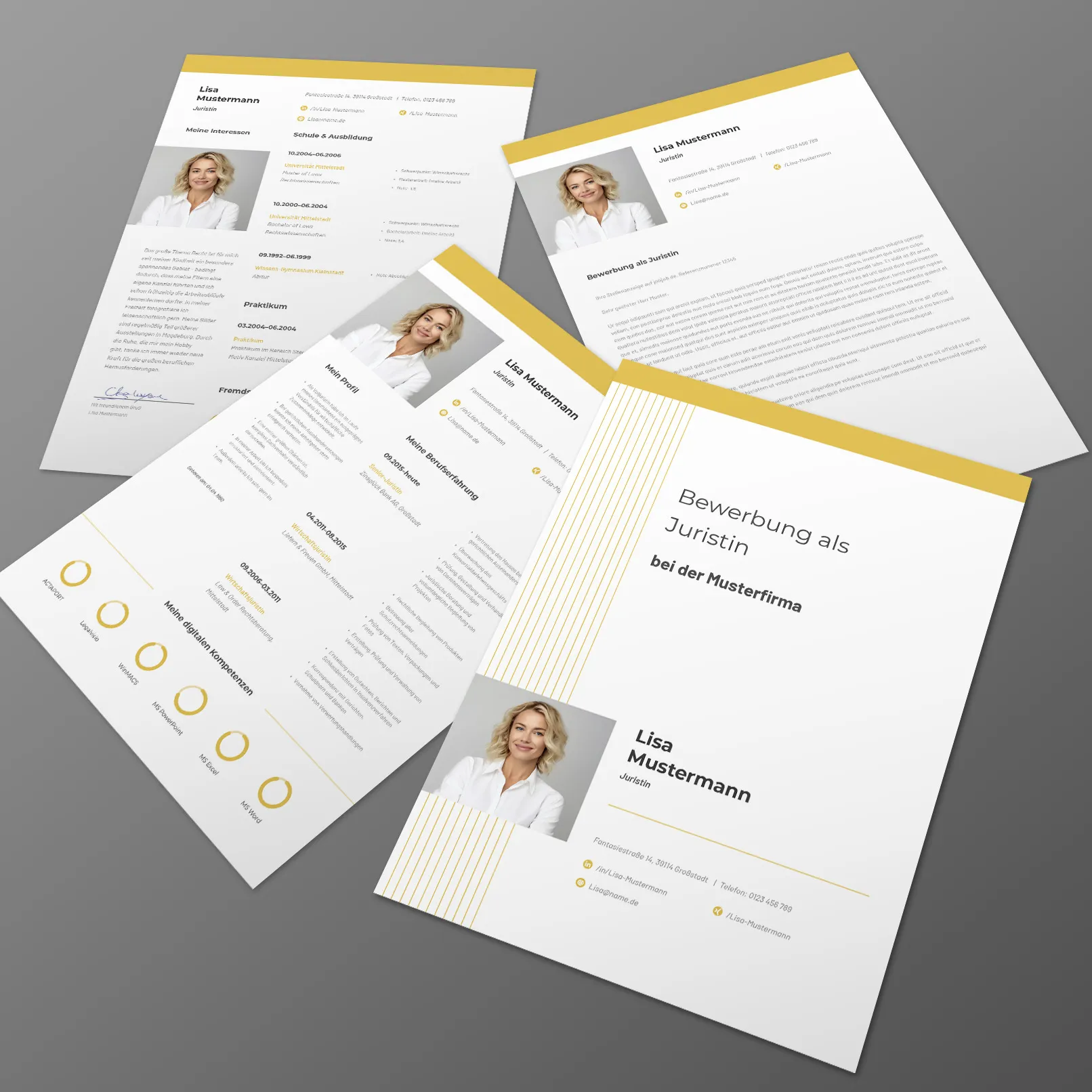
When indicating the dates, omit the day. It is advisable to write according to your national regulations. For instance, in Germany, it would be 05.2022 - 08.2024. Make sure to use the longer dash (–), which is slightly longer than the hyphen (-).
Present your data carefully and comprehensively. For each job position, mention at least the position and the employer. Additionally, you can include tasks, areas of responsibility, or achievements, especially if they are relevant to the position you are applying for.
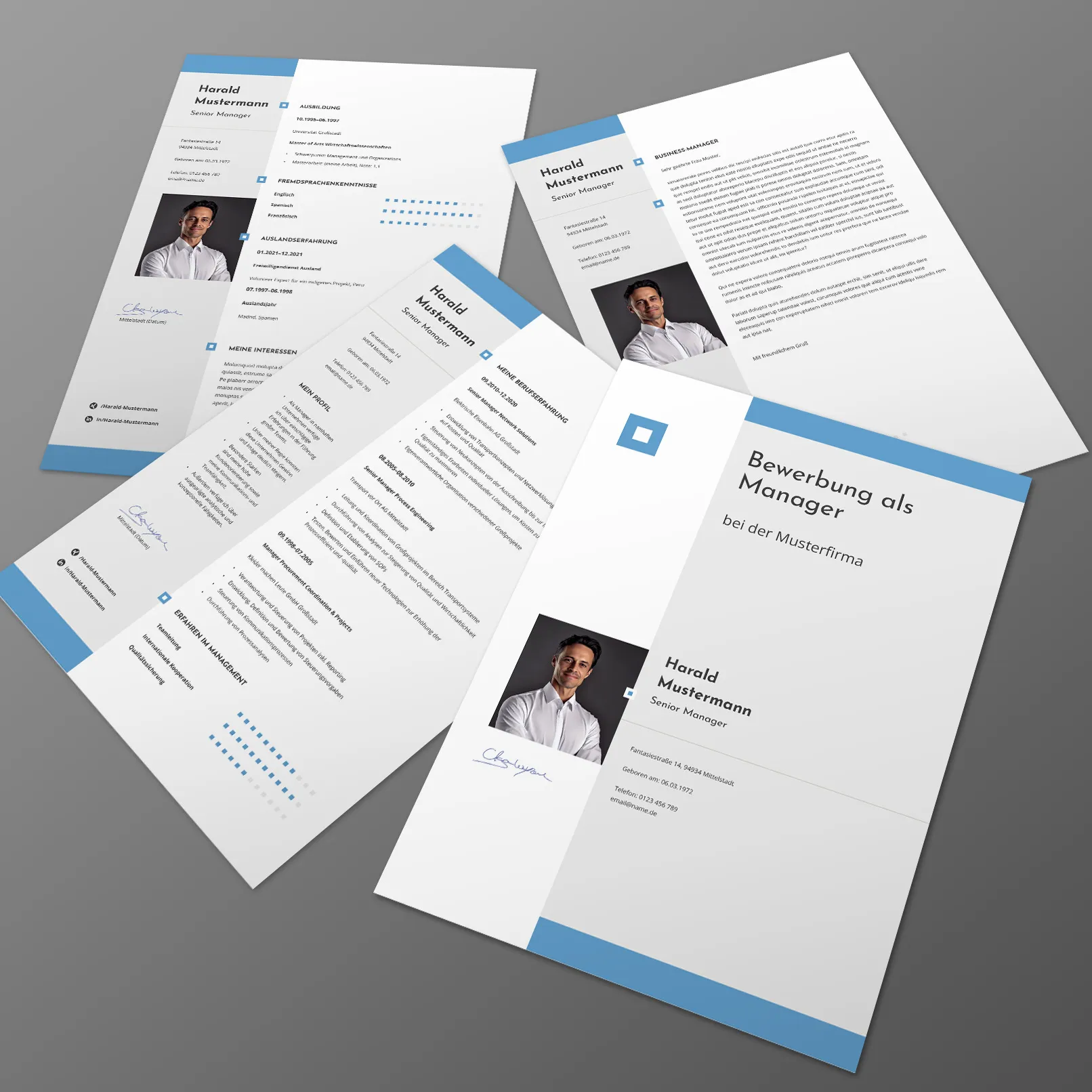
For instance, if you have been employed by two employers so far, and in your first role, your tasks do not align with the requirements of the desired job but do in your second role, you could simply mention the first job with the period, the employer, and the position in the resume. For the second job, add one or two key responsibilities. This way, you give more space to the more relevant position, weighting your resume more towards the advertised role.
How you structure your resume ultimately depends on the scope and number of your experiences. If you already have a long professional career, the focus should be on your work history, while education is best summarized in concise points. However, if you are still in training, in school, or have limited work experience, aspects such as internships or your qualifications will carry more weight.
You conclude your resume with your location and date. Use the same date format as in your cover letter. Below that usually follows your signature, confirming the accuracy of your information.
Single-column and two-column layout
With the two-column layout of your resume, you combine efficiency and clarity. This layout (date on the left, details on the right) saves space vertically, especially useful for longer resumes. Here, you can cleverly organize your qualifications and experiences, creating an eye-catching overview. The left column often includes headings like 'Work Experience' and 'Education', while the right column presents the corresponding details compactly. This format allows you to highlight important information without overwhelming the reader. The focus of this resume is on clarity and precision.
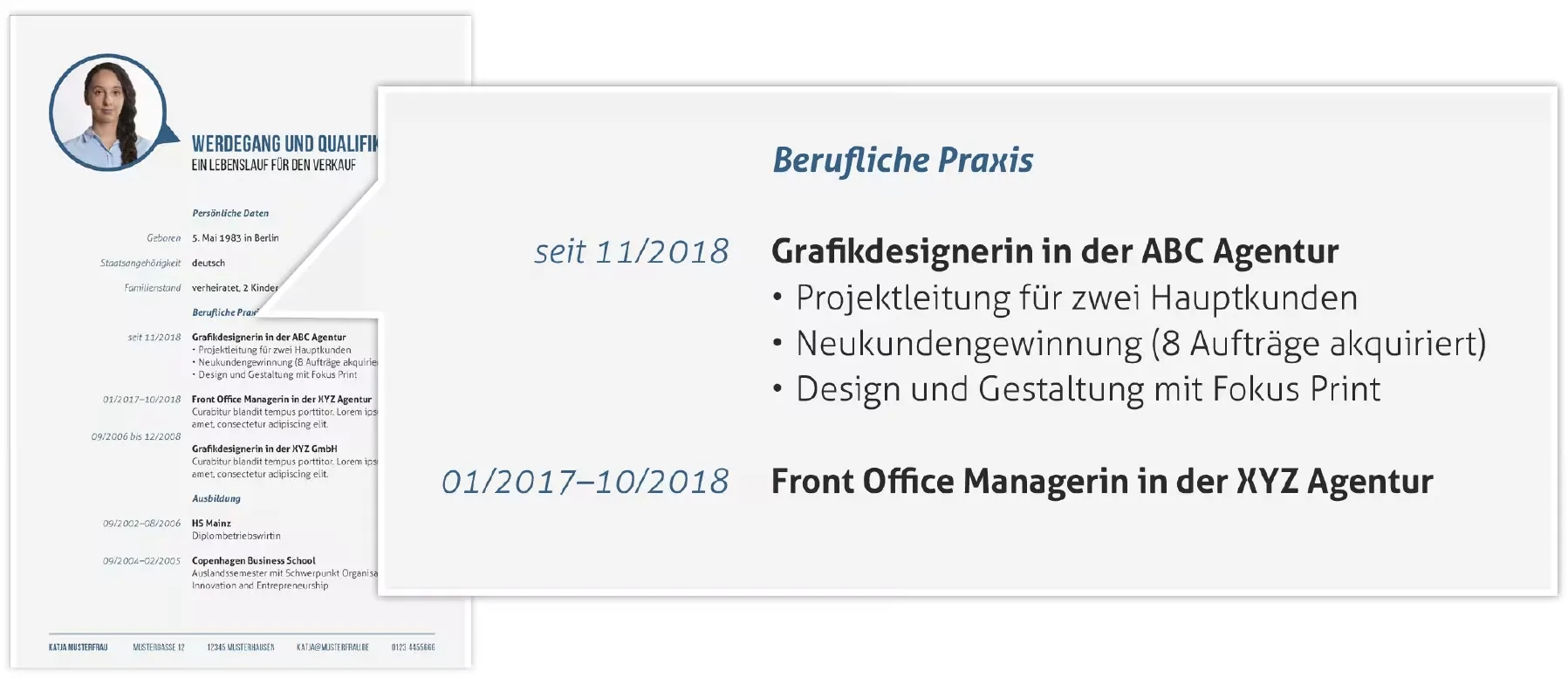
The single-column layout is particularly suitable for shorter resumes. By providing additional information on tasks, responsibilities, and achievements, you can emphasize key points relevant to the job you are applying for. Each point has space to shine, presented in a clear sequence. This elegant structure exudes clarity and professionalism, allowing your information to stand out without distractions.
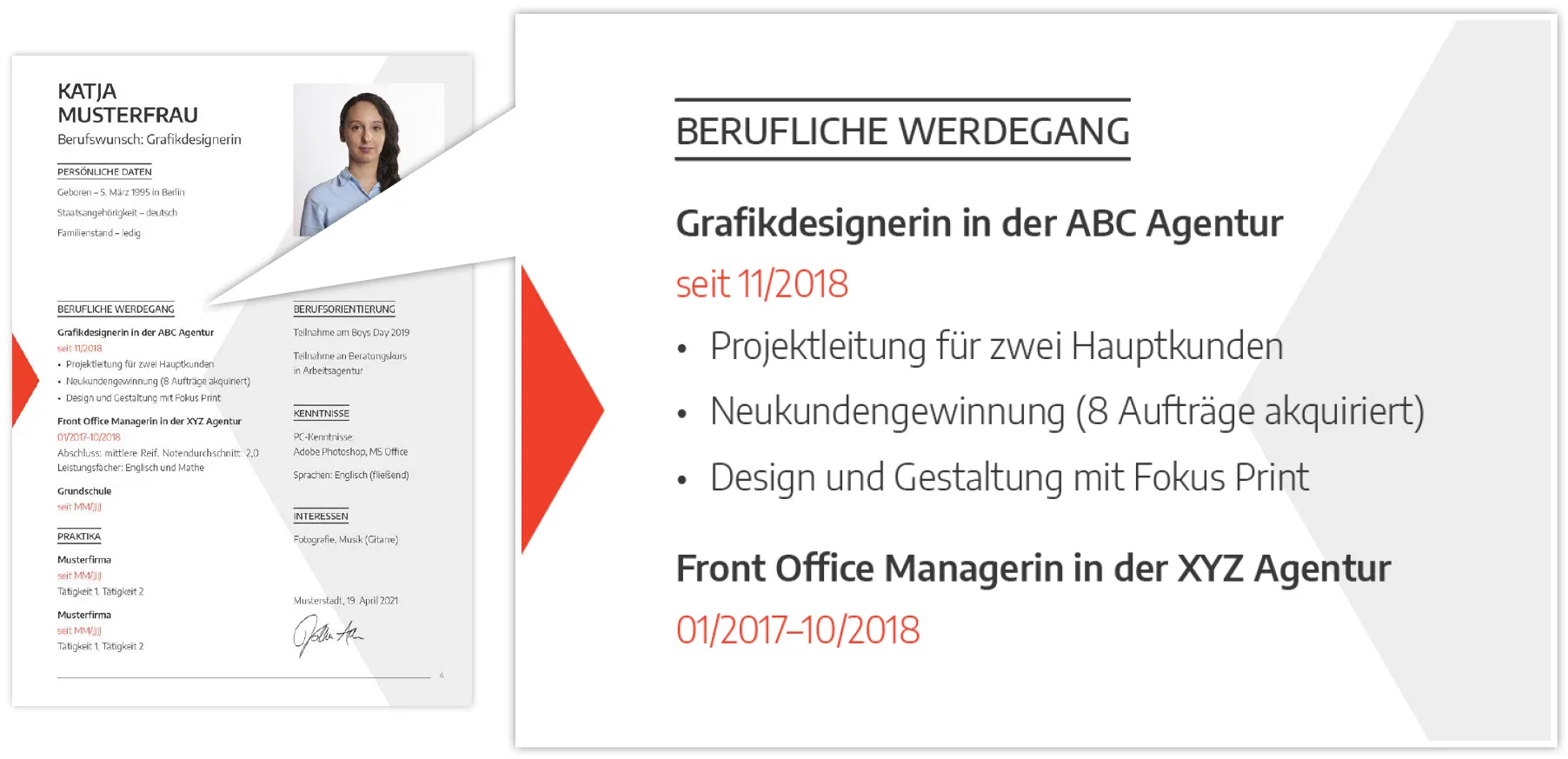
Extensive Work Experience
Sophie Mustermann already has decades of work experience. Therefore, she focuses on her most recent qualifications in the education section, providing only the most essential information. The first two jobs were unrelated to the position she is applying for, so she only mentions them. For the other employers, she highlights tasks that are relevant for the position. She emphasizes her experience abroad as the advertised position requires language skills. For the job-seeking phase, she states a reason and a goal. She supports her special skills with current certificates and mentions her voluntary management role in a sports club as the position also requires leadership qualities.
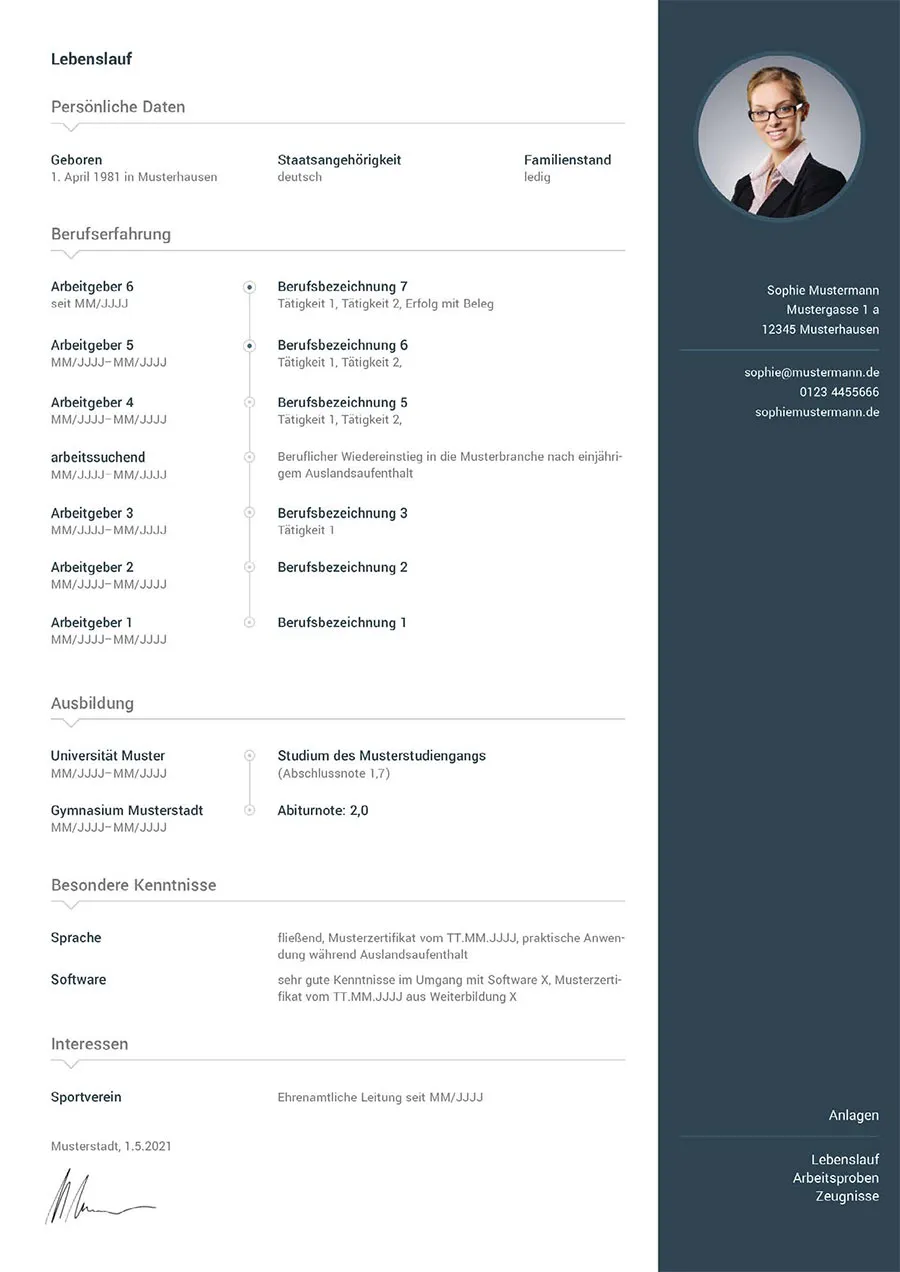
Short Resume (in School/Training)
Max Mustermann is currently in training. Therefore, he has limited experiences to list, including a year of job preparation, with the main responsibilities listed. In his single-column resume, he indicates the professional qualification he will obtain and his midterm exam grade. His educational background goes back to elementary school. He also includes two school internships. He highlights his activities related to job orientation under the "Career Guidance" section.
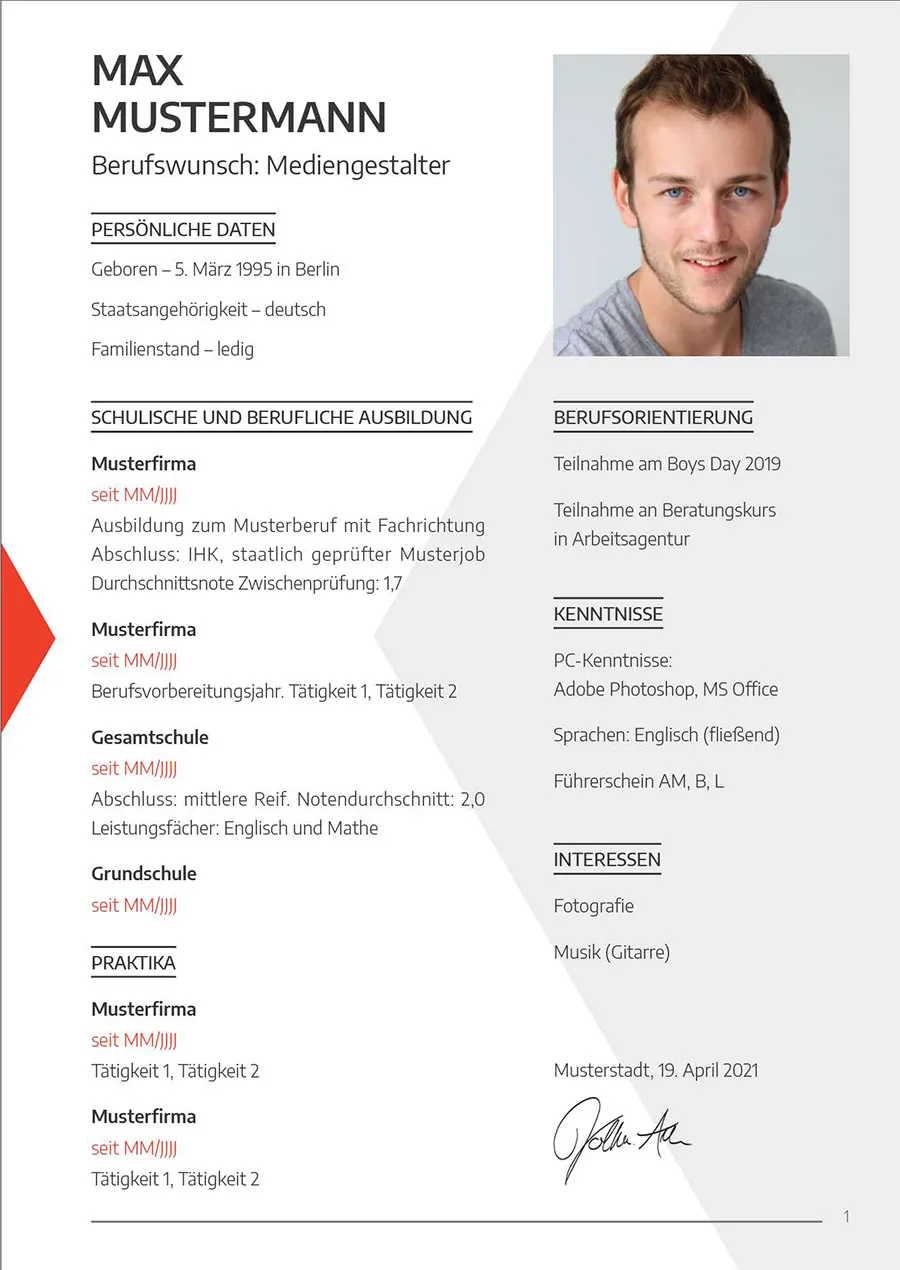
Balance and Emphasizing Key Points
Just like your cover letter, your resume should, wherever possible, align with the job requirements. Address the needs of your prospective employer. Therefore, you emphasize aspects that match the job requirements. At the same time, leverage your resume to enhance your personal profile by mentioning aspects that may not be directly related to the job description.
For example, if you have exceptional English language skills, there are three scenarios to consider: the job listing requests this competency, it is desired, or it is not mentioned at all.
If you are truly proficient in the language, it would be necessary to include these skills in your resume regardless. You should then consider how prominently to showcase them.
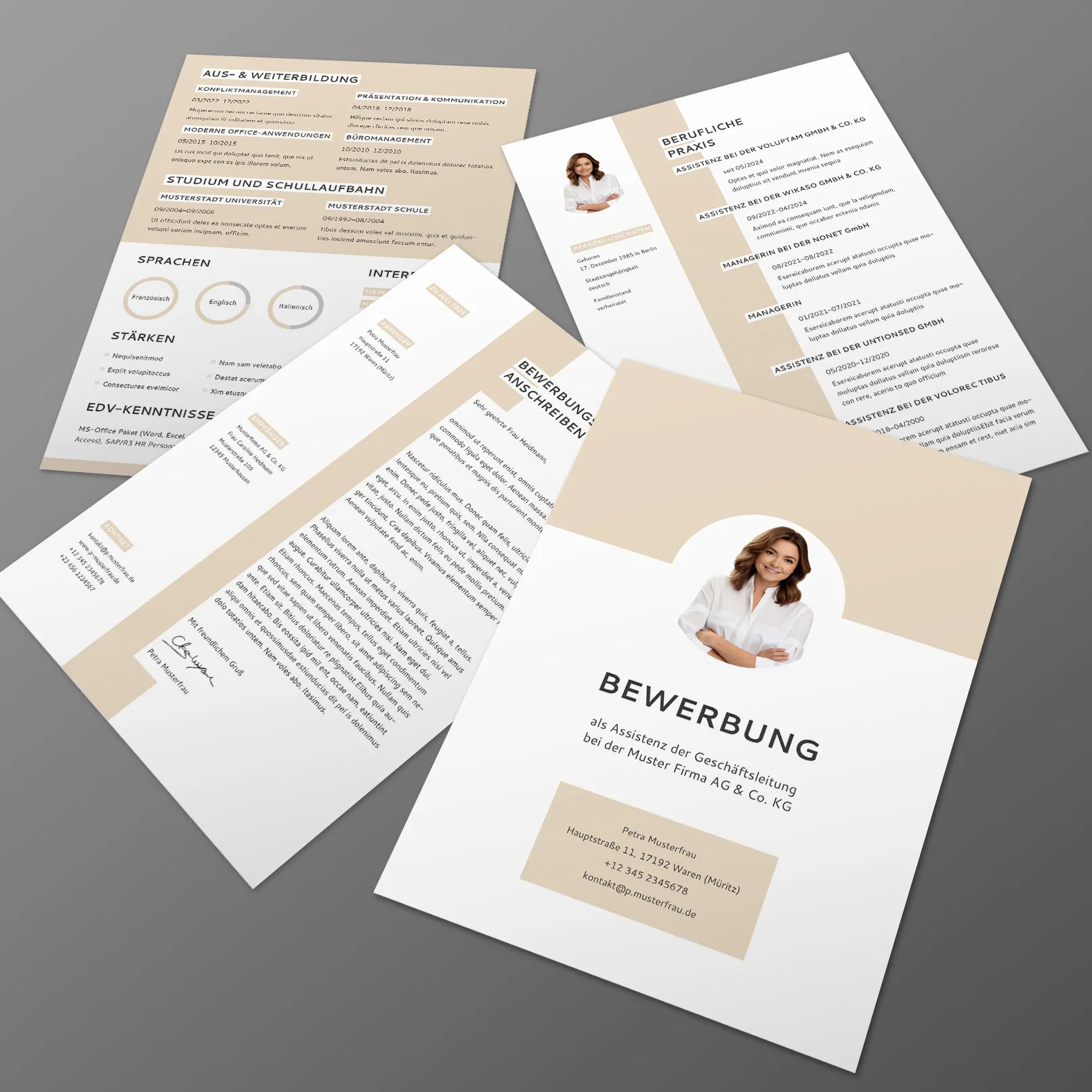
If the job listing does not specifically mention it, a brief mention under the "Skills" section may suffice: "English (fluent)". If English skills are desired or a minor aspect in the job listing, it would be wise to attach a relevant certificate to your documents.
However, if it is a main requirement, you can focus even more on your resume: For example, mention that you took English as an advanced course in high school. A stay abroad in England or the USA should stand out. Maybe you have also worked in a company in Spain or possibly in Germany where English was consistently spoken internally? Then feel free to highlight that.
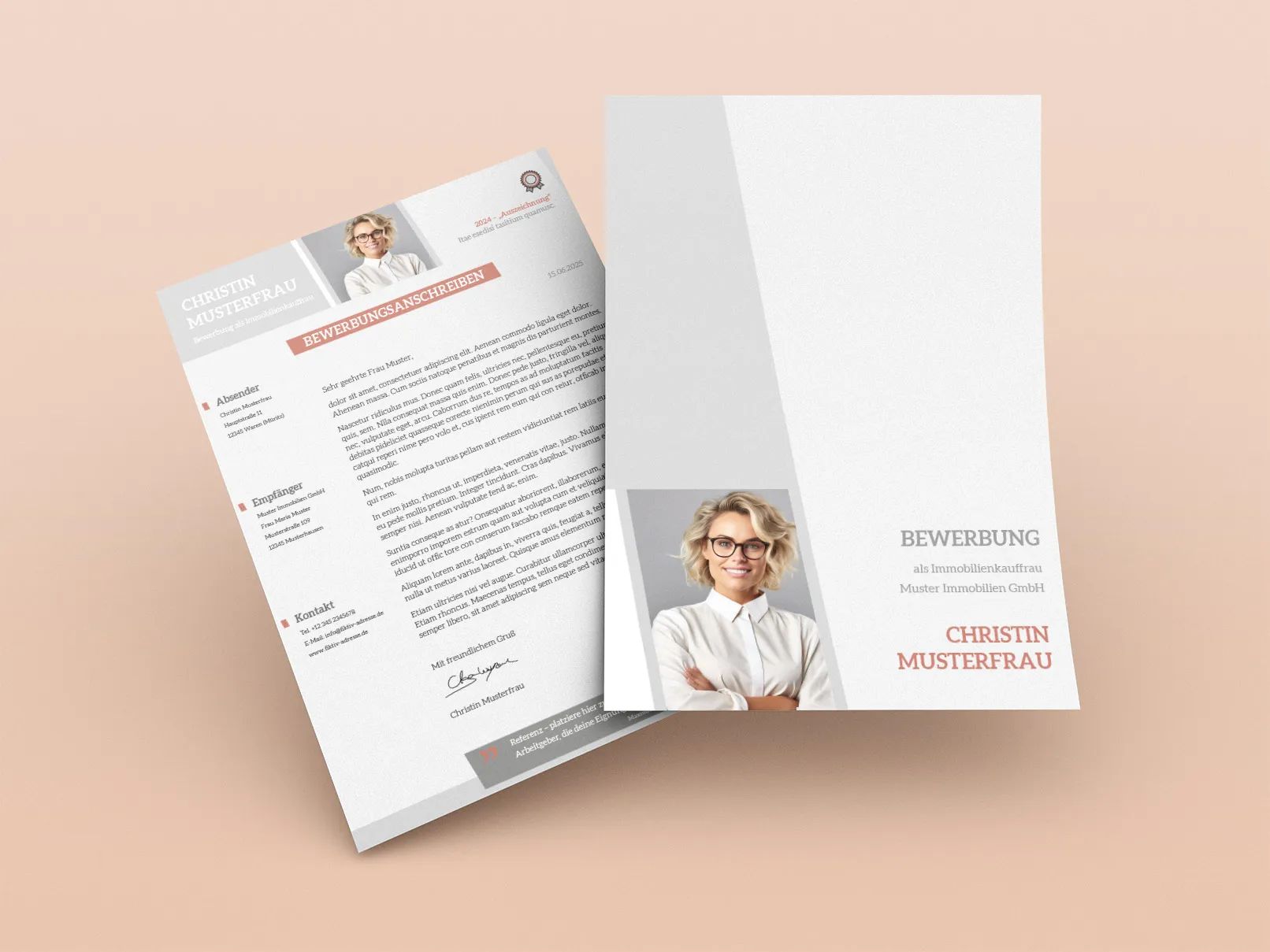
In addition to the requirements in the job advertisement, the company profile itself could also be a factor. If the company only operates regionally, English skills are probably less important. However, if it operates internationally, the hiring managers see that you can also communicate on an international level, quite literally.
The example shows: Which aspect you mention in your resume and how strongly you emphasize it is a matter of individual consideration. In your contemplations, consider the requirements of the job advertisement, the needs of your employer, and the company profile. Additionally, highlight where you bring special qualifications aside from all that, which may not be required but could enhance your profile.
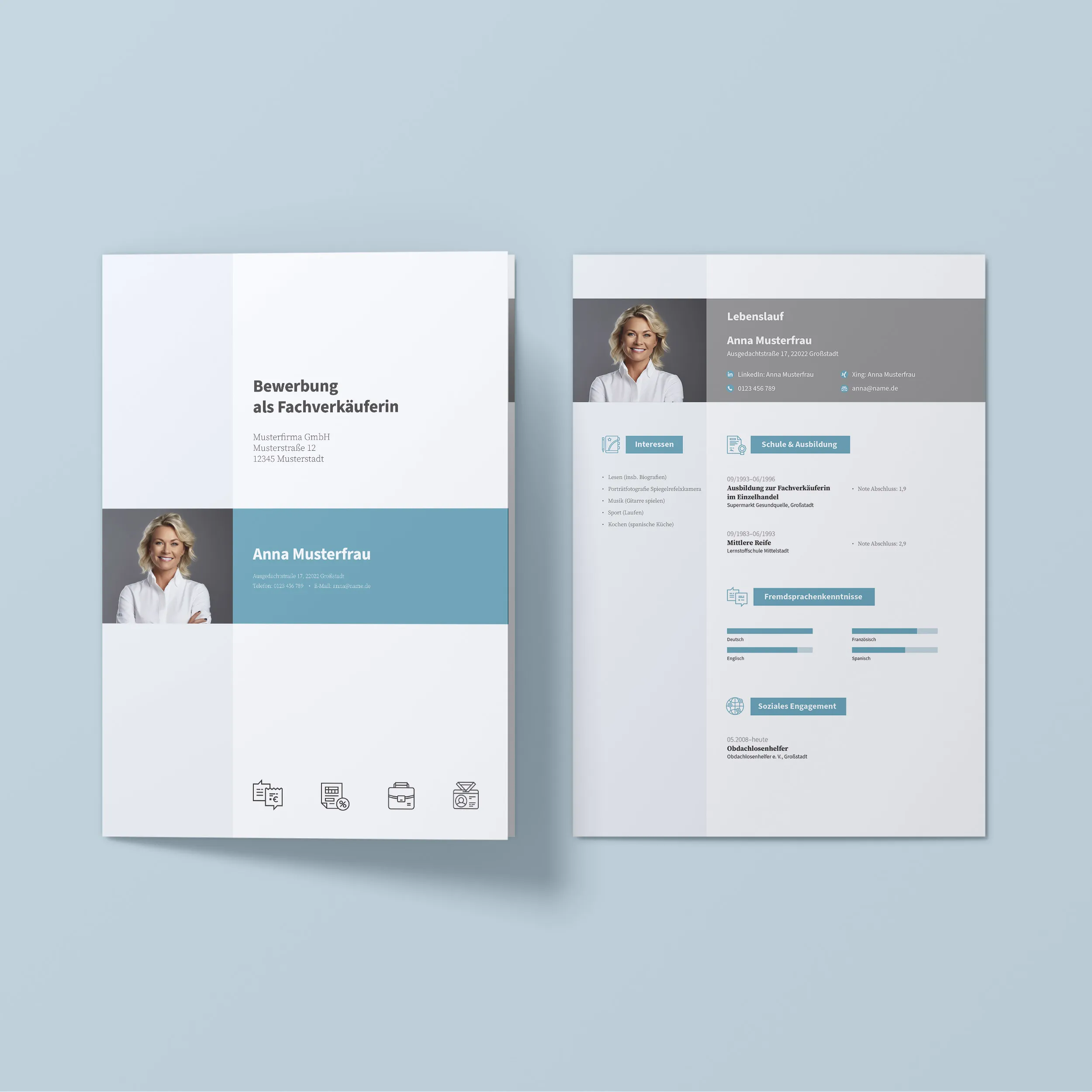
Pay Attention to Update while Building the Application
Can you show that you master Microsoft Word with a certificate? Can you prove that you have practical customer service experience with a relevant internship? – Great. But what about the currency of the certificate and your experiences?
Always consider how far back your evidence and proofs date when selecting them. For example, if your Word certificate dates back to 2010, the conclusion may be that you last dealt with a very old version of the software. If your internship is many years ago, it's to be assumed that the experiences gathered there are now just vague memories.
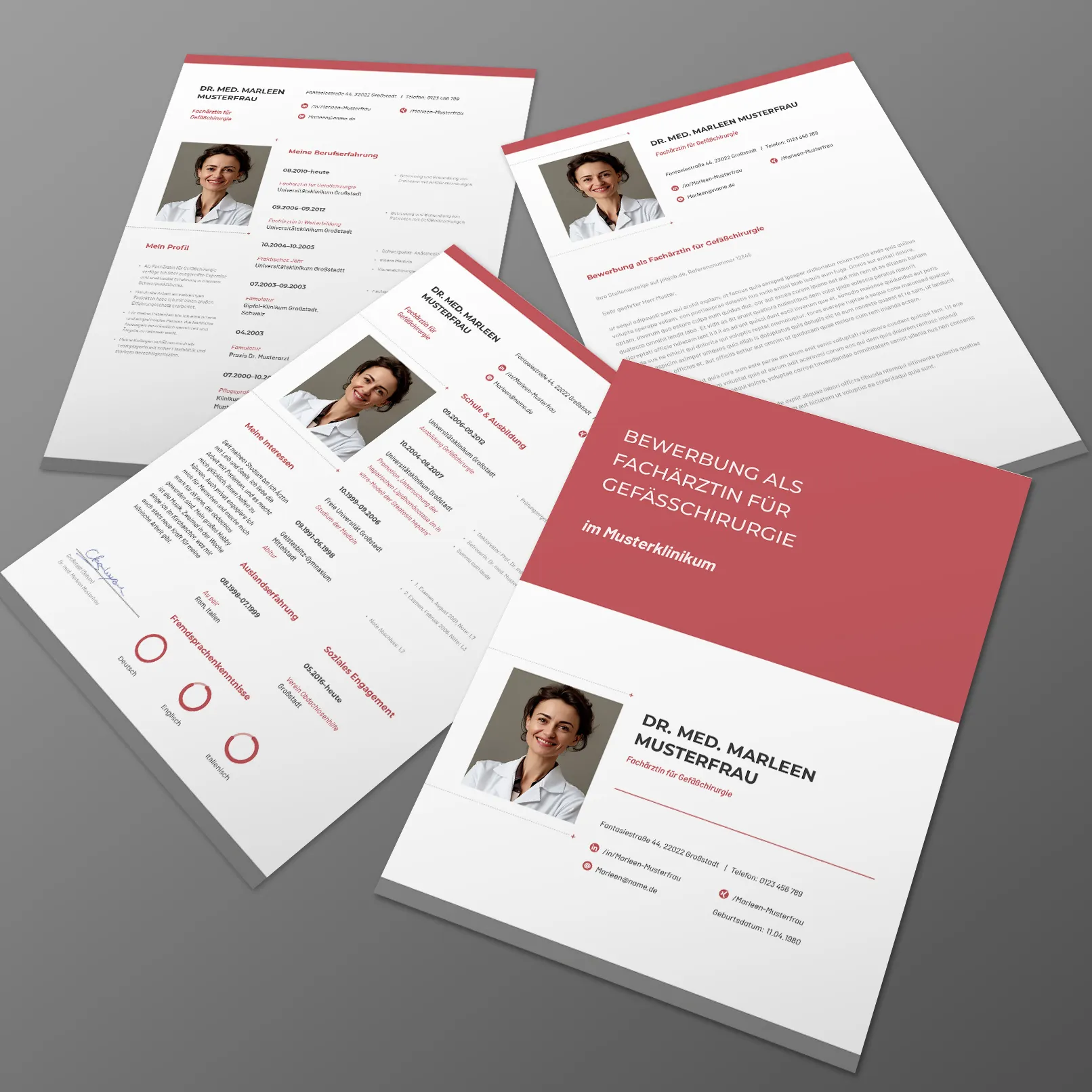
So weigh your evidence individually and in case of doubt, leave outdated ones out. In the best case, they only show that you have dealt with a particular topic at some point. In the worst case, they might even have a negative impact.
On the other hand: If a long-ago internship, stay abroad, or similar fills a gap in your resume, you should still list such experiences.
By the way, you should also consider the update aspect when mentioning software skills. For instance, if you have been working with the old Photoshop version CS2 or Word from 2007 for a long time, state that you have knowledge of Photoshop or Word. Period. If you work with the more current Photoshop or Word versions, explicitly mention that by stating “Photoshop CC” or “Microsoft Word 365” .
You can add usual evaluations such as “very good” or “good” in parentheses. But you can also go further and use other formulations, for example: “Photoshop CC” (daily use for photo editing). This way, you demonstrate that your skills are up-to-date. A method you can also use when you have no or only very old proofs.
Useful Articles for Creating the Perfect Application
A meaningful cover letter is just the first step on your way to your new position. A professional photo can make the crucial difference. In our article How to create a professional image on your own, you will learn how to create a high-quality application photo with simple means and a little preparation to leave the best first impression.
The German Lebenslauf is also a central element of your application. Often, the question arises whether a traditional or modern resume is more suitable. Both formats have their advantages, and in our articles, we shed light on which option is right for you. This way, you ensure that your resume is convincing both in terms of content and appearance.
To make it easier for you to create your resume, we offer the Free Word Resume Templates Download. These templates are professionally designed and can be easily customized to fit your personal needs. This ensures that your resume is formally correct and appealing, without investing too much time.
In addition to the perfect cover letter and resume, preparing for the job interview is another important step. Our collection of interview questions provides you with a comprehensive overview of the most common questions that could be asked. Especially questions about your strengths and weaknesses in the job interview are crucial. We show you how to answer these questions confidently and honestly without coming across negatively.
A successful structure and content of a cover letter can make the crucial difference. Your cover letter should not only reflect your motivation and qualifications but also express your personality. Our detailed guides help you create a compelling cover letter that impresses recruiters.
The next important point is the resume: What is important? In our articles, you will learn what information should not be missing in your resume and how to structure it best. From personal data to professional experience to special skills and hobbies – we show you what really matters.
The combination of a professional application photo, a well-structured resume, and a convincing cover letter is the key to a successful application. With our comprehensive guides and tips, you are well-equipped to stand out in the application process and increase your chances of being invited to a job interview.
Whether you are just starting out in your career or looking for a new challenge – our articles provide you with the necessary tools and information to optimize your application documents. Use our resources to prepare yourself as best as possible and present yourself in the best light.
